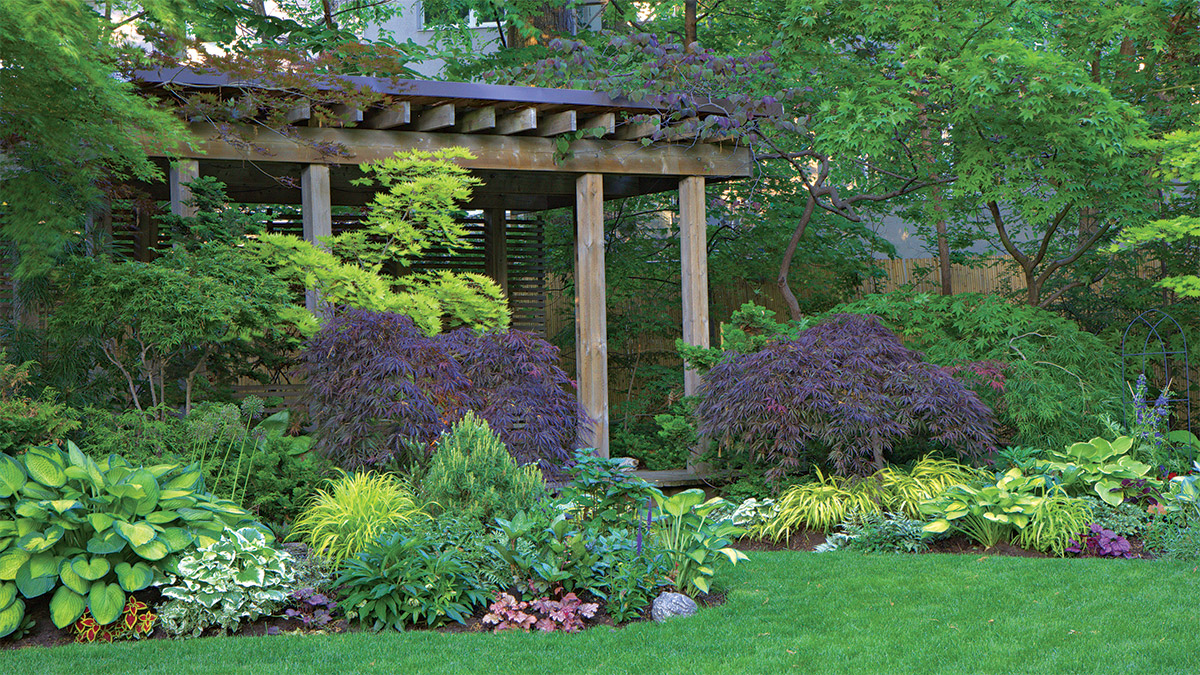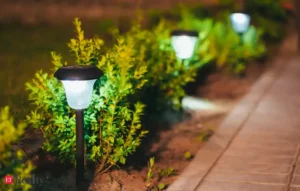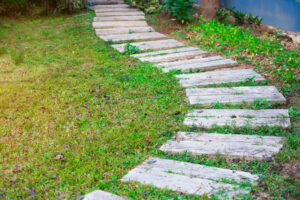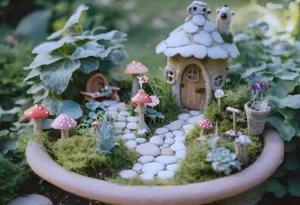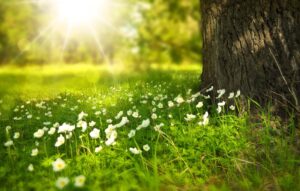10 Shade Garden Ideas: Transform Your Shaded Space into a Thriving Oasis
Every garden has those challenging shaded areas where the sun barely reaches. These spots often become neglected or underutilized, but they actually offer incredible potential for creating lush, peaceful retreats. If you’ve been struggling with a shady yard or wondering how to make the most of those darker corners, you’re in the right place. This guide will walk you through ten creative shade garden ideas that will transform those dim spaces into vibrant, flourishing havens.
Understanding Shade Gardens: The Basics
Before diving into specific ideas, it’s important to understand what we mean by “shade gardens.” Not all shade is created equal, and identifying the type of shade in your garden is the first step toward success.
Types of Shade in Your Garden
The United States Department of Agriculture (USDA) classifies shade into several categories that will help you determine which plants will thrive in your specific conditions:
- Deep shade: Areas that receive no direct sunlight and very little reflected light, such as spots under dense evergreen trees or on the north side of buildings
- Full shade: Locations that receive less than 3 hours of filtered sunlight per day
- Partial shade: Areas that receive 3-6 hours of sun per day, usually in the morning or late afternoon
- Dappled shade: Light that filters through the branches of deciduous trees, creating a pattern of sun and shade
According to the National Garden Association, understanding your shade type is crucial because it directly affects plant selection and care requirements. For more detailed information about shade classifications and plant compatibility, visit the USDA Natural Resources Conservation Service website.
10 Inspiring Shade Garden Ideas for Your Landscape
1. Create a Woodland Retreat
One of the most natural approaches to shade gardening is to embrace the woodland aesthetic. This style mimics the forest floor ecosystem, featuring multiple layers of vegetation that thrive in low-light conditions.
Start by adding a canopy of small understory trees like dogwoods or Japanese maples if you have the space. Beneath them, incorporate shrubs such as azaleas, rhododendrons, or hydrangeas. For the ground layer, woodland natives like ferns, hostas, astilbes, and wildflowers create a lush carpet of greenery.
What makes woodland gardens so special is their seasonal interest. In spring, ephemeral blooms like trilliums and bleeding hearts emerge before the tree canopy fills in. Summer brings lush foliage in various shades of green, while fall offers colorful leaf changes. Even winter has its charm with interesting bark patterns and evergreen accents.
The key to successful woodland gardening is building healthy soil with plenty of organic matter. Add a layer of leaf mold or compost annually to mimic the natural forest floor conditions. This approach not only helps retain moisture but also provides essential nutrients for your shade-loving plants.
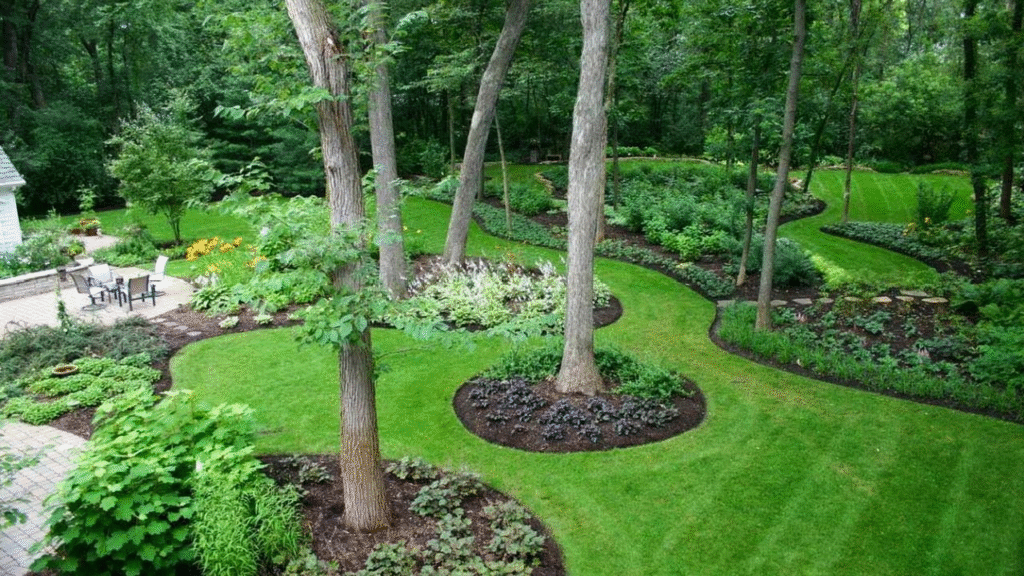
2. Design a Tranquil Water Feature
Water features work particularly well in shaded spaces, creating a cool, peaceful atmosphere that engages multiple senses. The sound of moving water adds a meditative quality while reflecting light into darker areas.
Consider these options for shade garden water features:
A small pond surrounded by moisture-loving plants creates a self-contained ecosystem. Stock it with aquatic plants like water lilies (choose varieties that tolerate shade) and marginals such as cardinal flower or Japanese iris.
For smaller spaces, a bubbling urn or simple fountain requires minimal maintenance while still providing that soothing water sound. Place it near a seating area where you can enjoy the peaceful ambience.
Stream beds, even artificial ones that recirculate water, create movement and interest. Line them with river rocks and moisture-loving plants like astilbe, Japanese forest grass, or golden Japanese sweet flag.
Remember that water features in shade require less maintenance than those in full sun, as they experience less algae growth and evaporation. However, you’ll still need to clear fallen leaves regularly to prevent water quality issues.
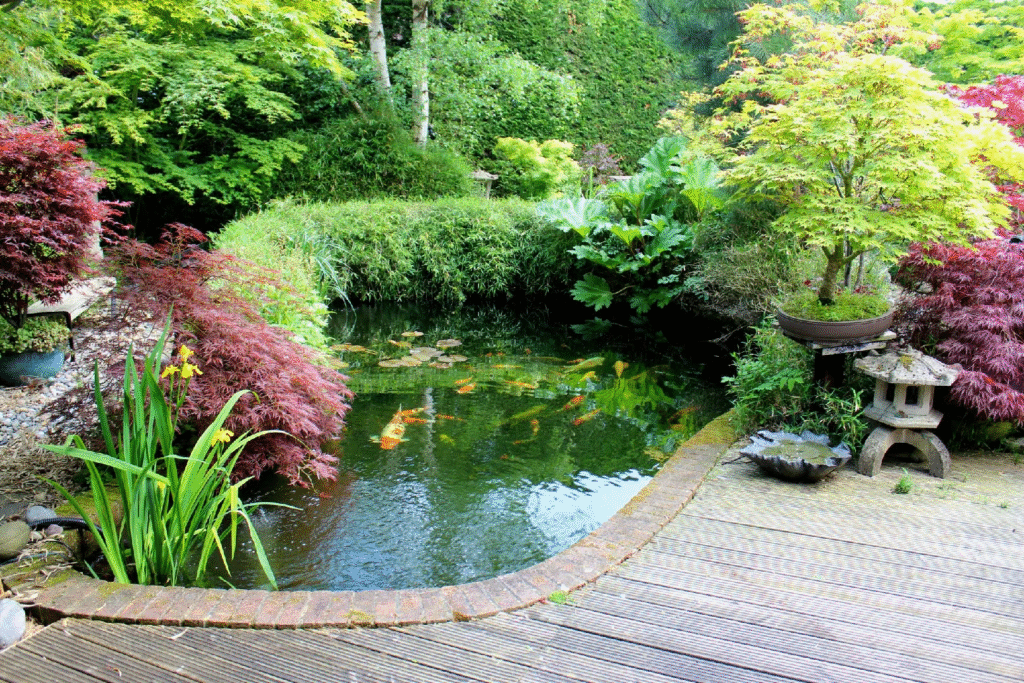
3. Embrace Foliage-Forward Design
While many gardeners focus primarily on flowers, shade gardens offer an opportunity to appreciate the incredible diversity of foliage. With limited sunlight, many shade plants have evolved large, distinctive leaves that maximize light capture.
Create visual interest by combining different leaf shapes, sizes, textures, and colors. Mix the bold, heart-shaped leaves of hostas with the feathery texture of ferns. Contrast the deeply lobed leaves of heucheras with the grassy form of Japanese forest grass (Hakonechloa).
For color variation, look beyond green to plants with variegated, gold, blue, burgundy, or silver foliage:
- Heucheras (coral bells) offer an incredible range of leaf colors from lime green to deep purple
- Japanese painted ferns provide silver and burgundy tones
- Brunnera ‘Jack Frost’ features silver leaves with green veining
- Golden Japanese forest grass brings bright chartreuse color to dark corners
Arrange these plants in sweeping drifts rather than individual specimens for a more cohesive, impactful design. This approach creates a tapestry effect that’s visually striking even without abundant flowers.
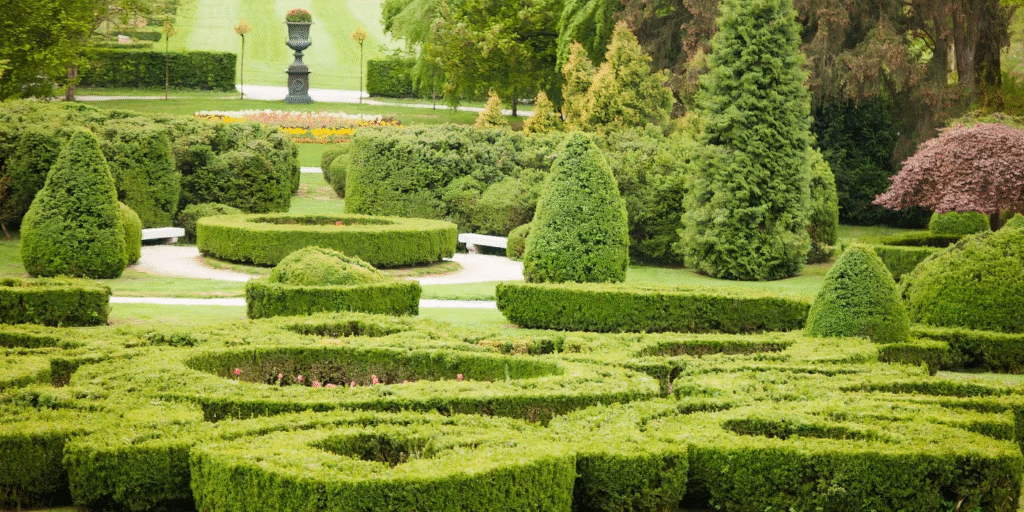
4. Install a Shade-Friendly Patio or Seating Area
Shaded areas make perfect locations for outdoor living spaces, providing natural cooling during hot summer months. Consider installing a patio, deck, or simple seating area in your shadiest spot.
Materials like flagstone, brick, or wood decking work well in shade gardens, though be aware that stone or brick surfaces may stay damp longer in shade. This can be mitigated with proper drainage and occasional cleaning to prevent moss growth (though some gardeners enjoy the mossy patina that develops over time).
Surround your seating area with shade-tolerant container plants for flexibility and visual interest. Containers allow you to experiment with different plant combinations and can be moved to optimize growing conditions. Try colorful coleus, begonias, and fuchsias for seasonal color, or go with more permanent plantings of small shrubs and perennials.
Consider adding subtle lighting to extend the usability of your shade garden into the evening hours. Solar lights may not charge effectively in deep shade, so low-voltage landscape lighting is often a better choice. Uplighting trees or highlighting pathways creates a magical atmosphere after dark.
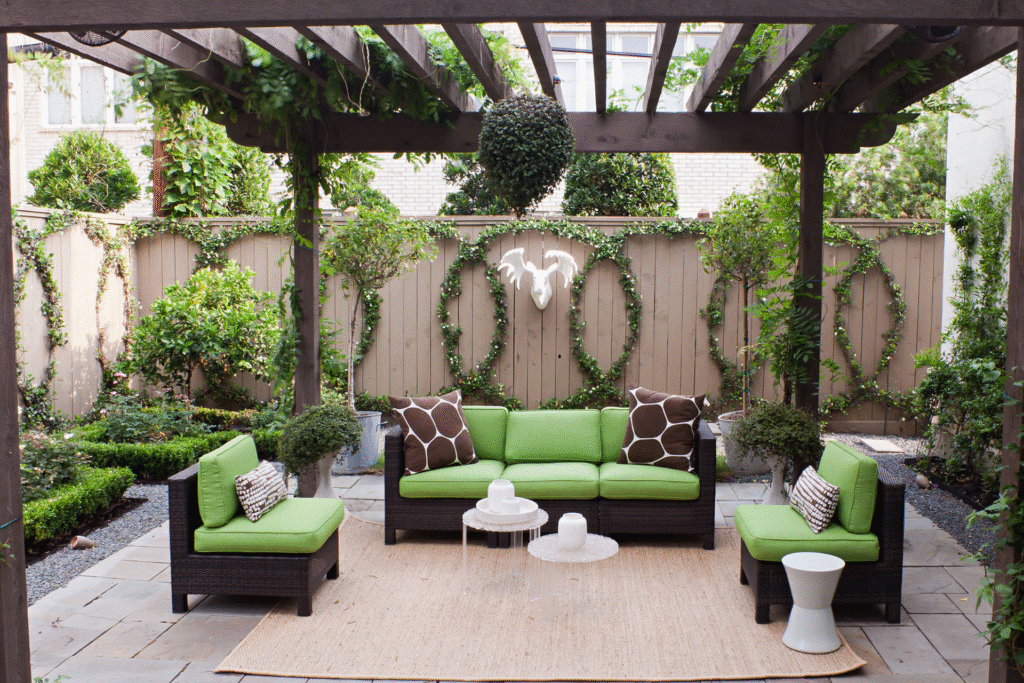
5. Cultivate a Shade-Loving Edible Garden
Contrary to popular belief, you can grow edibles in shade. While deep shade is challenging, areas with partial or dappled shade can support a surprising variety of food plants.
Here’s a table of shade-tolerant edibles you can incorporate into your garden:
| Plant Type | Varieties for Shade | Light Requirements | Notes |
|---|---|---|---|
| Leafy Greens | Lettuce, Spinach, Kale, Arugula, Chard | Partial to dappled shade | Actually prefer shade in summer; prevents bolting |
| Herbs | Mint, Parsley, Cilantro, Chives, Tarragon | Partial shade | Mint can be invasive; consider growing in containers |
| Berries | Alpine strawberries, Blackberries, Raspberries | Dappled to partial shade | Yield may be reduced compared to full sun |
| Root Vegetables | Radishes, Beets, Carrots (shorter varieties) | 4+ hours of sun | Need loose soil for proper development |
| Perennial Vegetables | Rhubarb, Asparagus, Sorrel | Partial shade | Long-term investments that return yearly |
| Forest Foods | Mushrooms, Ramps (wild leeks), Fiddlehead ferns | Full to deep shade | Specialty items that thrive in woodland conditions |
For more detailed information on shade-tolerant edibles suitable for your specific region, check out resources from the USDA Cooperative Extension Service.
Incorporate these edibles into your landscape alongside ornamental plants, or create a dedicated kitchen garden in a shadier part of your yard. The key is to experiment and observe what performs best in your specific conditions.
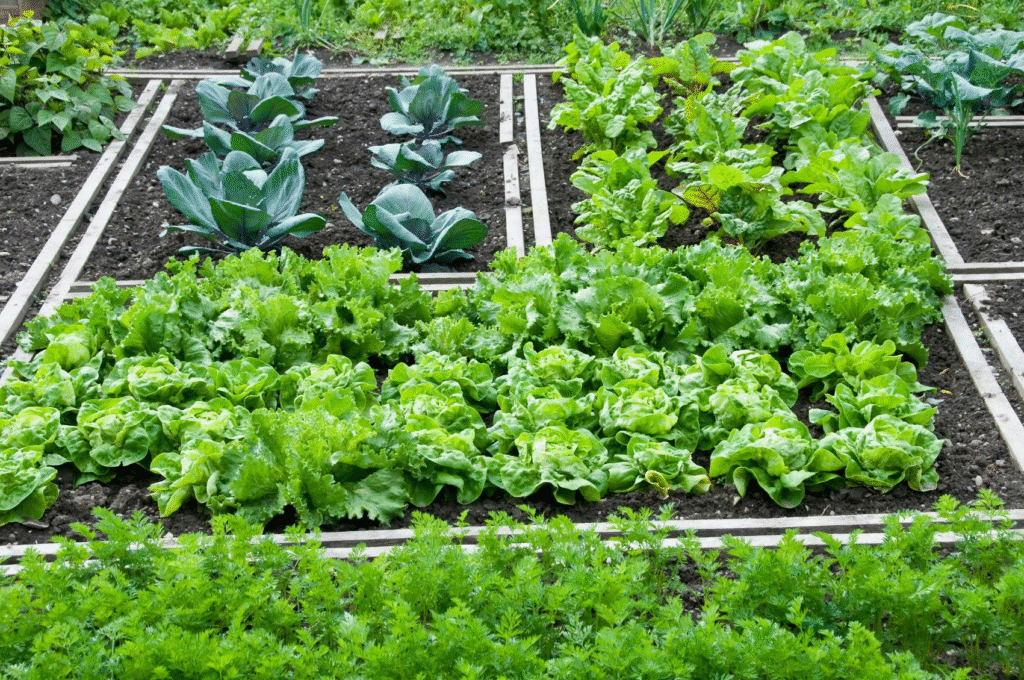
6. Build a Fern Garden Sanctuary
Few plants epitomize shade gardening better than ferns. These ancient plants have evolved to thrive in low-light conditions and bring unmatched texture and movement to garden spaces. Creating a dedicated fern garden area can be a spectacular addition to your shaded landscape.
The diversity within the fern family is astonishing—from the delicate maidenhair fern to the robust Japanese painted fern to the architectural ostrich fern. Combining different varieties creates a tapestry of textures and heights:
- Tall background ferns: Ostrich fern, Cinnamon fern, Royal fern
- Mid-height ferns: Japanese painted fern, Lady fern, Autumn fern
- Ground-covering ferns: Christmas fern, Hart’s tongue fern, Holly fern
For added interest, incorporate shade-loving companions like hostas, astilbes, and tiarella that complement the ferns’ feathery textures. A few carefully placed rocks or logs can enhance the natural woodland feel while providing additional microhabitats.
Fern gardens require minimal maintenance once established. A yearly application of leaf mold or compost and regular watering during dry periods is usually sufficient. Most ferns prefer consistently moist but not soggy soil, so adding organic matter to improve water retention is beneficial in most garden situations.
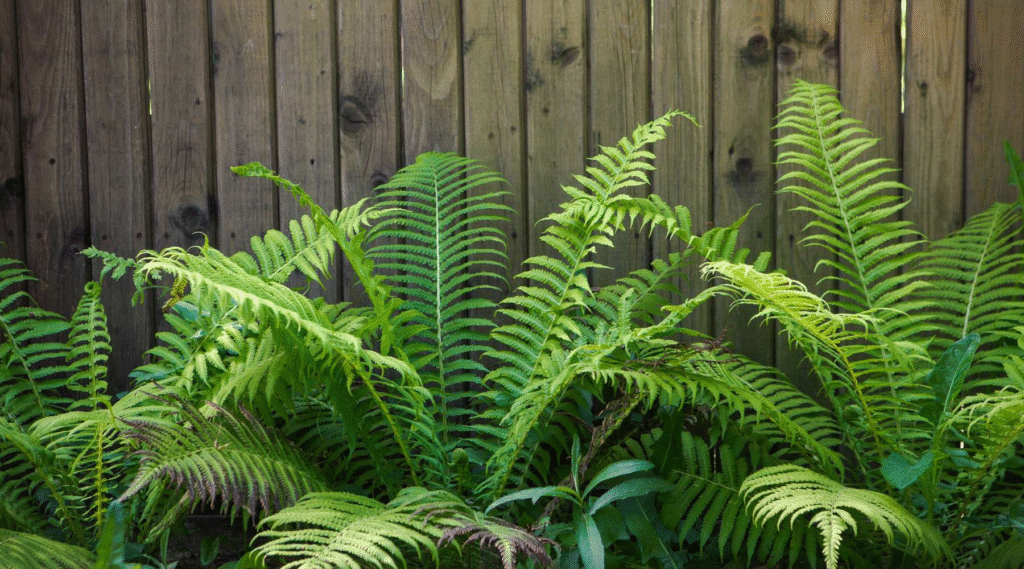
7. Design a Shade Garden for Birds and Wildlife
Shade gardens can become vibrant ecosystems that attract and support local wildlife. By incorporating plants that provide food, shelter, and nesting materials, you can transform your shaded space into a haven for birds, beneficial insects, and small mammals.
Native plants are particularly valuable for wildlife gardens as they have co-evolved with local fauna. According to the U.S. Fish and Wildlife Service, native plants provide significantly more ecological benefits than non-natives. Some excellent shade-tolerant natives include:
- Understory trees: Dogwoods, Serviceberry, Redbud
- Shrubs: Native azaleas, Virginia sweetspire, Spicebush
- Perennials: Wild ginger, Woodland phlox, Turtlehead, Native columbine
Include plants that produce berries or seeds for birds—serviceberries, dogwoods, and viburnums are excellent choices for shade gardens. Nectar-rich flowers like cardinal flower, turtlehead, and native columbine attract hummingbirds and butterflies.
Don’t forget to provide water sources as well. A simple birdbath or small water feature dramatically increases the wildlife value of your garden. Adding a few logs or rock piles creates habitat for beneficial insects and small creatures like toads that help control garden pests.
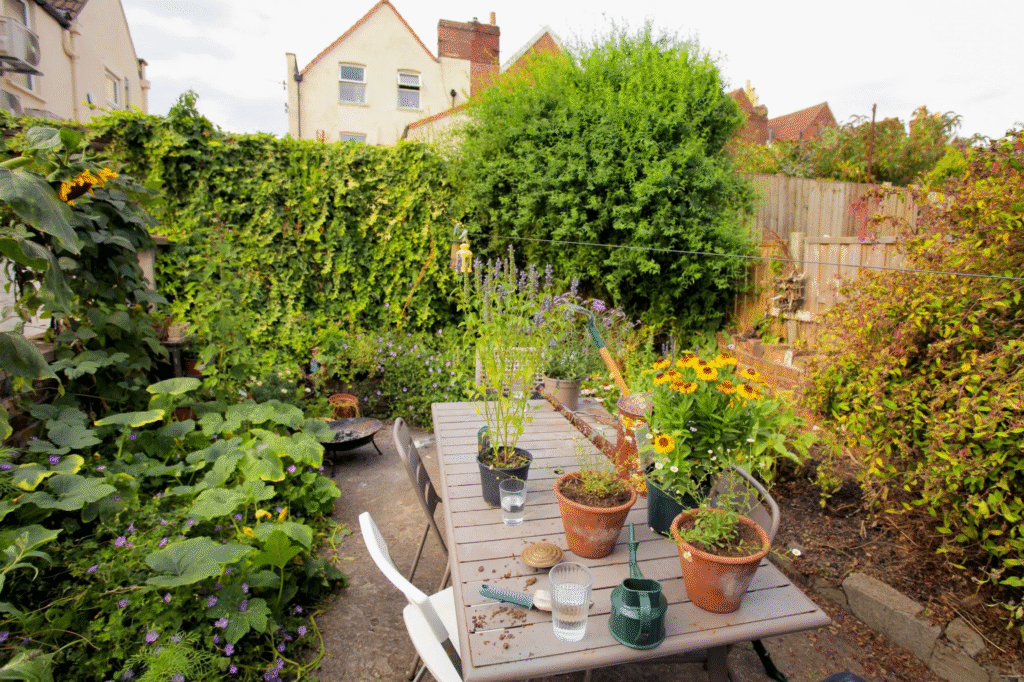
8. Incorporate Vertical Elements and Climbers
Vertical gardening is an excellent strategy for maximizing limited space and adding height to shade gardens. Walls, fences, trellises, and arbors provide opportunities to grow climbing plants that thrive in shadier conditions.
Shade-tolerant climbing plants include:
- Climbing hydrangea, with its exfoliating bark and stunning white lacecap flowers
- Japanese hydrangea vine (Schizophragma), similar to climbing hydrangea but with more ornamental flowers
- Virginia creeper, a native vine with spectacular fall color
- Some clematis varieties, particularly those in pruning group C
- Boston ivy, which adheres to surfaces without support and provides excellent fall color
These climbers not only add visual interest but also create habitat for birds and beneficial insects. When planning vertical elements, consider the structure carefully—ensure it’s sturdy enough to support mature vines and positioned to allow for maintenance access.
Beyond climbers, consider other vertical elements like tall narrow trees (Japanese maples, serviceberries), columnar shrubs, or even artistic elements like sculpture or decorative screens. These break the horizontal plane and draw the eye upward, making your shade garden more dynamic and interesting.

9. Create a Moss Garden
Moss gardens embody tranquility and are perfectly suited to deeply shaded areas where other plants struggle. These ancient plants create a lush green carpet that requires minimal maintenance while providing year-round interest.
Unlike conventional gardens, moss gardens embrace the qualities of shade rather than fighting against them. They maintain their verdant appearance through winter when other garden areas may be dormant, and they require no mowing, fertilizing, or typical lawn care.
To establish a moss garden:
Start with appropriate site preparation—mosses prefer acidic soil with good drainage. Adding leaf mold or pine needles can help create the right conditions.
Choose moss varieties suited to your specific conditions. Sheet mosses (Hypnum) work well for larger areas, while cushion mosses (Leucobryum) create interesting mounds and texture. You can transplant moss from other parts of your property or purchase it from specialty nurseries.
Complement your moss with appropriate companions like small ferns, wild ginger, or woodland wildflowers. Incorporating carefully selected rocks, logs, or lanterns creates the serene atmosphere associated with Japanese moss gardens.
While establishing, keep your moss garden moist and clear of fallen leaves. Once established, moss requires minimal care beyond occasional leaf removal and keeping foot traffic to designated paths.
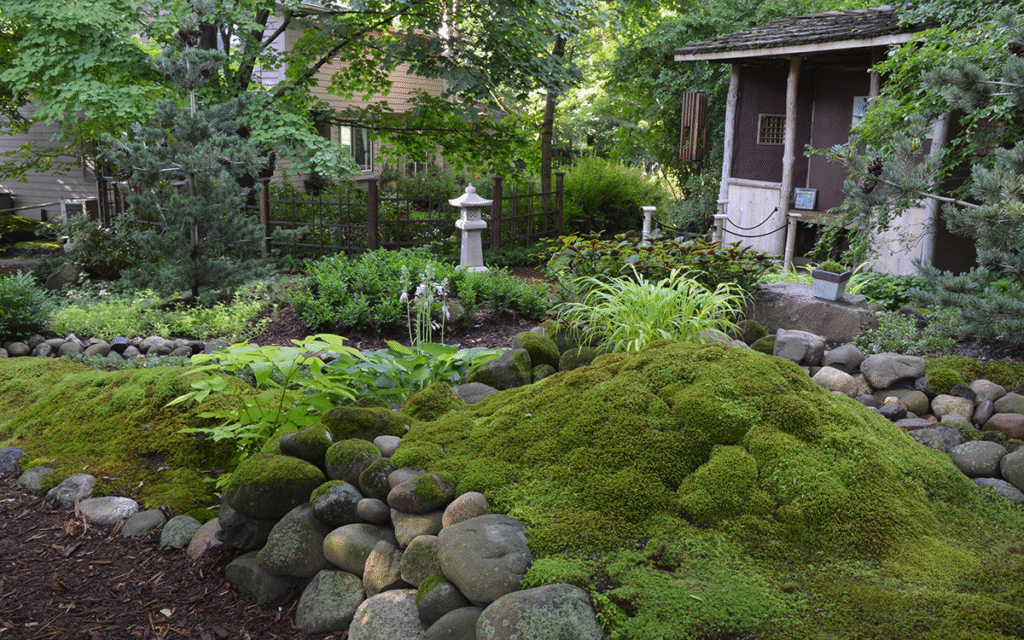
10. Design a Shade-Tolerant Container Garden
Container gardening offers flexibility and endless creative possibilities for shaded spaces. Containers allow you to overcome poor soil conditions, create focal points, and easily change your garden’s appearance throughout the seasons.
When designing container compositions for shade, follow the “thriller, filler, spiller” approach:
- Thrillers: Eye-catching focal plants like caladiums, Japanese forest grass, or upright ferns
- Fillers: Mid-height plants that add fullness, such as begonias, impatiens, or heucheras
- Spillers: Trailing plants that cascade over pot edges, including fuchsias, creeping Jenny, or variegated ivy
Choose containers that complement your garden style and home architecture. For natural woodland gardens, consider stone, weathered terracotta, or wooden planters. More formal gardens might benefit from classic urn shapes or geometric designs.
Container placement is crucial in shade gardens. Position them where they can catch any available light, perhaps at the edge of a tree’s canopy or where they’ll receive morning sun. Grouping containers creates more visual impact than scattering individual pots throughout the garden.
Remember that container plants typically require more frequent watering than in-ground plantings, especially those in terracotta pots which wick moisture away. Self-watering containers can be particularly helpful in shade gardens where you may not notice drying soil as quickly as in sunny areas.
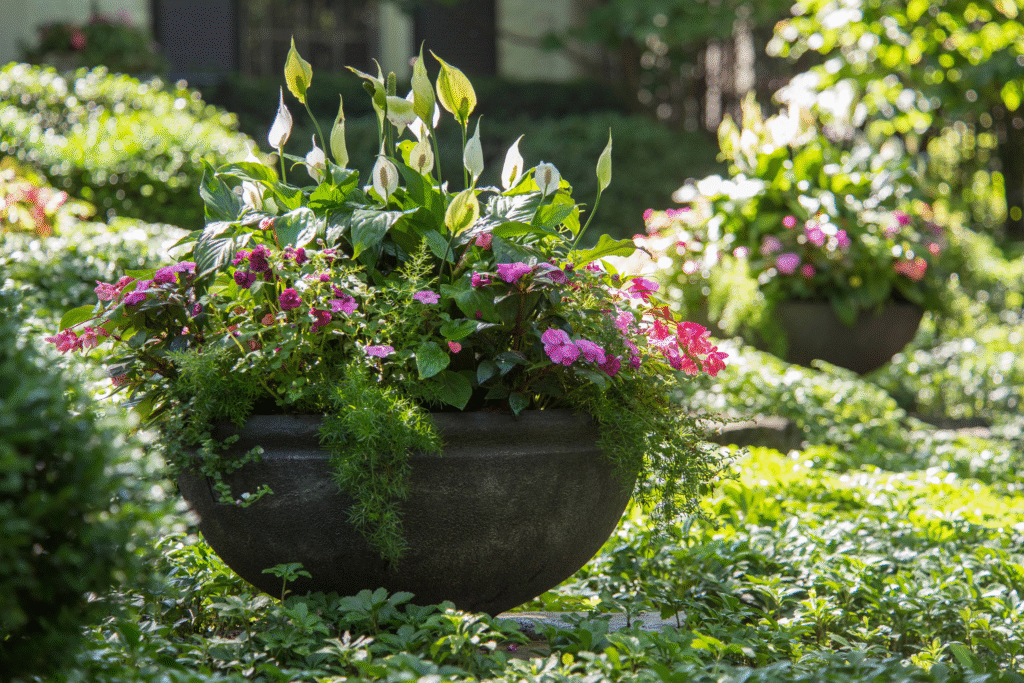
Conclusion: Embracing the Potential of Shade Gardens
Shade gardens offer unique opportunities to create cool, peaceful retreats that stand in pleasant contrast to hot, sunny garden areas. By understanding the specific conditions in your garden and selecting appropriate plants and design elements, you can transform challenging shaded spaces into some of the most beautiful and inviting areas of your landscape.
Remember that successful shade gardening is about working with nature rather than against it. Embrace the qualities that shade provides—cooler temperatures, subtle light, and protection from harsh elements—and select plants and features that enhance these characteristics.
Whether you prefer the lush tranquility of a woodland garden, the practical benefits of shade-tolerant edibles, or the textural complexity of ferns and hostas, there’s a shade garden approach that will work for your specific site and personal taste. The ideas presented here can be mixed and matched, adapted, and personalized to create your ideal shaded sanctuary.
For additional gardening resources specific to your region, contact your local USDA Cooperative Extension office, which can provide localized advice and plant recommendations tailored to your specific climate and conditions.
